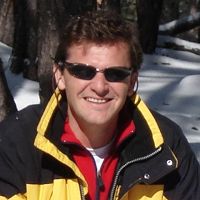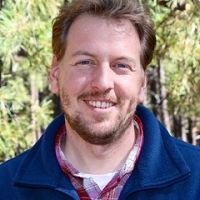Troch et al., 2014
Monitoring and Modeling Water, Energy and Carbon Fluxes at the Hillslope Scale in the Landscape Evolution Observatory
Troch P., Barron-Gafford G., Dontsova K., Fang Y., Niu G-Y., Pangle L., Tuller M., Van Haren J. (2014)
Abstract H43L-1128 presented at 2014 Fall Meeting, AGU, San Francisco, CA, 15-19 Dec.
-
Catalina-Jemez, INVESTIGATOR
-
Catalina-Jemez, INVESTIGATOR
-
Catalina-Jemez, INVESTIGATOR, COLLABORATOR
Abstract
Climate change is one of the most pressing challenges facing society today. Assessing the impact of increasing temperatures and changing precipitation regimes on our ecosystems heavily relies on our ability to monitor and model changes in ecosystem response. At the same time, understanding how ecosystem changes feed back to the climate system greatly depends on our capability of measuring and modeling turbulent flux exchanges of energy, water, and carbon between the land surface and atmosphere. Accurately quantifying these land surface turbulent fluxes at hillslope and small catchment scales is challenging. This is due to difficulties in closing energy and mass balances at such scales, as well as heterogeneities that exist at larger spatial scales as a result of small-scale variations in soil moisture, soil and vegetation characteristics, and energy distribution. The current generation of land surface models (LSMs) for use in Earth System Models (ESMs) operate at even larger spatial scales due to lack of sufficient computing power and data availability of land surface characteristics. Improving our understanding of how small-scale variations in land surface properties and states affect large-scale turbulent fluxes is urgently needed to improve existing parameterizations adopted in LSMs. For this purpose, observational facilities at different spatial scales and with different degrees of control are needed. At Biosphere 2 of the University of Arizona, we recently expanded the monitoring capabilities of the Landscape Evolution Observatory (LEO), to be able to: (1) accurately measure land surface fluxes of water, energy and carbon at the hillslope scale; (2) quantify small-scale variability of these fluxes across a moderately complex landscape; (3) analyze these small-scale observations of below- and aboveground processes to understand how they interact and feed back to induce large-scale fluxes; and (4) develop new parameterization schemes that account for sub-grid variability of observable land surface states and properties to predict turbulent fluxes at the hillslope scale from aggregated surface states, such as soil moisture. This presentation will provide an overview of the above-ground instrumentation as well as show early results of water and energy balance monitoring and modeling.
Citation
Troch P., Barron-Gafford G., Dontsova K., Fang Y., Niu G-Y., Pangle L., Tuller M., Van Haren J. (2014): Monitoring and Modeling Water, Energy and Carbon Fluxes at the Hillslope Scale in the Landscape Evolution Observatory. Abstract H43L-1128 presented at 2014 Fall Meeting, AGU, San Francisco, CA, 15-19 Dec..
Explore Further



